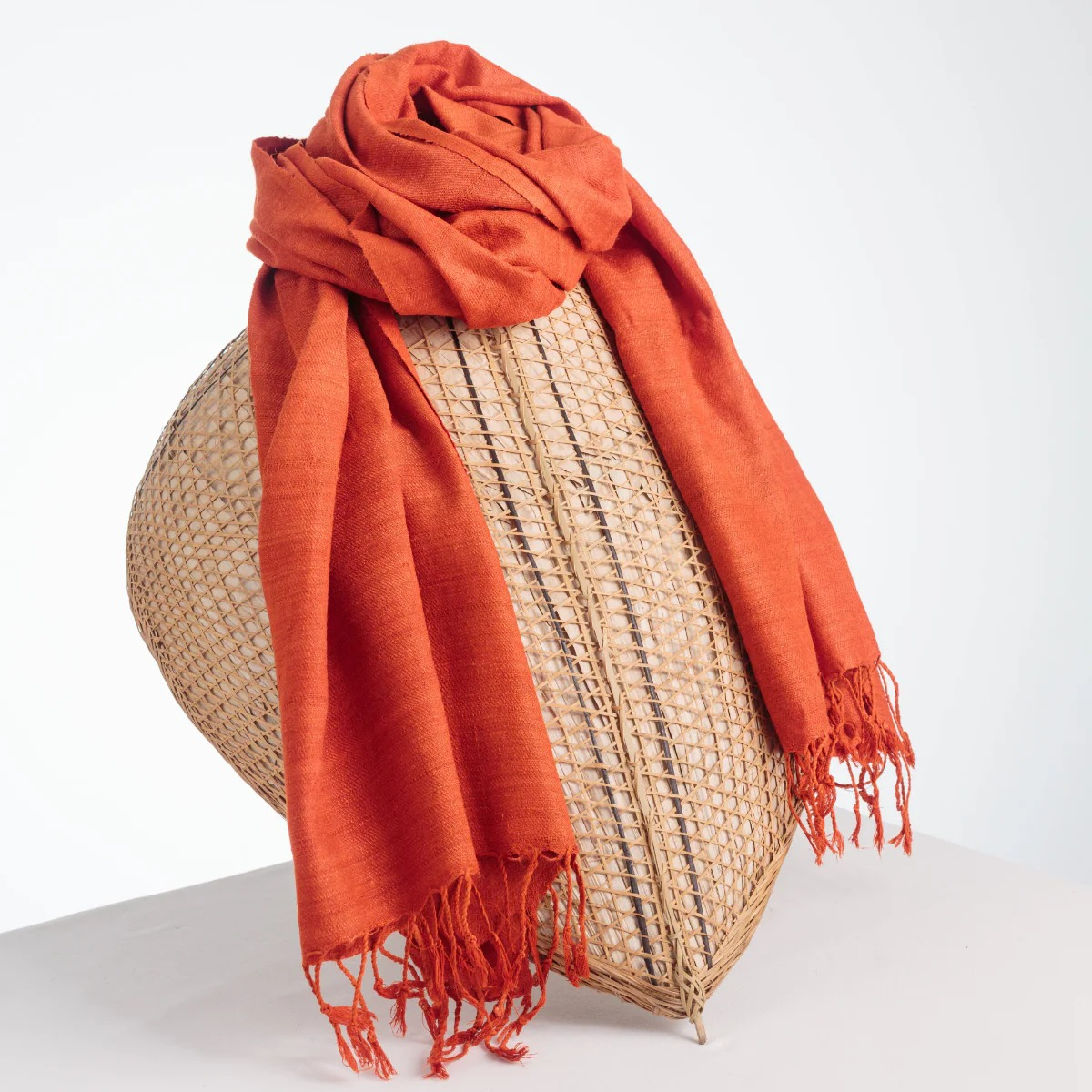
Introduction:
The combination of Brazil wood and turmeric dyes creates a stunning saffron hue that blends the rich red of Brazil wood with the vibrant golden yellow of turmeric. In the North-Eastern states of Manipur and Assam, this unique dyeing method is embraced by artisans for its ability to produce a bright, eye-catching color that carries both cultural and spiritual significance. The saffron hue is particularly revered in India, symbolizing purity, energy, and strength. This natural dye combination is often used in traditional garments, adding a layer of beauty and depth to handloom products, reflecting the natural environment and heritage of the region.
Description:
The process of producing saffron dye from Brazil wood and turmeric is both time-intensive and delicate. Brazil wood, a tropical hardwood, provides a deep red pigment, while turmeric, a spice derived from the root of the Curcuma longa plant, offers a bright golden-yellow hue. Both dyes are prepared separately before they are combined. Artisans begin by boiling the Brazil wood chips or powder in water, extracting the red pigment over a few hours. Simultaneously, turmeric rhizomes are dried and ground into a powder, which is also boiled to extract its vibrant yellow dye.
Once both dye solutions are ready, they are carefully mixed in various proportions depending on the desired shade of saffron. The process of blending the two dyes is delicate, as the turmeric’s intense yellow can easily dominate the Brazil wood’s red. Artisans must carefully adjust the ratio of the dyes, testing the blend on sample fabrics to achieve the perfect balance. The final result is a radiant saffron color that ranges from a light, orangey yellow to a deep, more reddish-orange, depending on the specific dyeing method used.
The fabric to be dyed is usually pre-treated with a mordant, such as alum or iron, to help the dye adhere to the fibers and improve color retention. After this, the fabric is dipped into the dye mixture and left to soak for several hours, allowing the pigments to fully saturate the fibers. The dyeing process is repeated multiple times for deeper, more intense hues. Once the dyeing is complete, the fabric is rinsed and left to dry in the shade to prevent fading caused by direct sunlight.
In Manipur and Assam, saffron-colored fabrics hold cultural importance, particularly in religious and spiritual contexts. The color saffron is closely associated with Hinduism, symbolizing renunciation, divinity, and purity. It is often seen in traditional attire worn during festivals, ceremonies, and other significant events. The brightness of the saffron hue represents vitality and energy, making it an ideal choice for vibrant handloom products such as shawls, scarves, and garments used in celebrations.
From a sustainability standpoint, the use of Brazil wood and turmeric dyes is part of the region’s commitment to eco-friendly and natural dyeing practices. Both plants are renewable resources, and the dyeing process is free from harmful chemicals, contributing to the growing global movement toward sustainable fashion. By choosing to use natural dyes like Brazil wood and turmeric, artisans in North-East India are not only preserving traditional craftsmanship but also promoting a more environmentally conscious approach to textile production.
The appeal of saffron-colored textiles extends beyond their visual beauty. The richness of the color, combined with the symbolism it carries, makes these fabrics highly sought after by consumers who appreciate the connection between culture, nature, and sustainability. As natural dyes continue to gain popularity in the modern fashion world, the saffron dye created from Brazil wood and turmeric remains a striking example of the vibrant possibilities offered by traditional dyeing techniques.